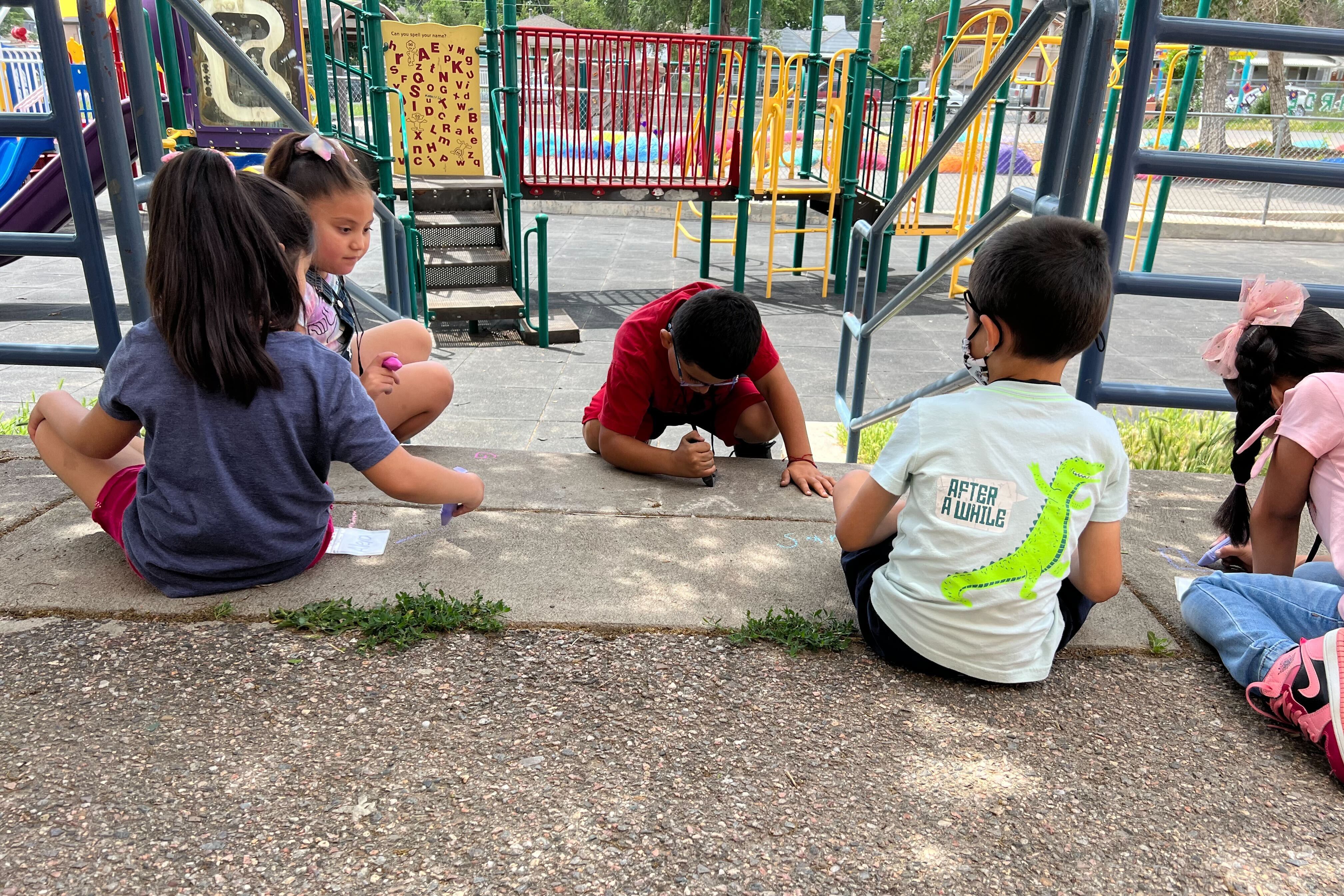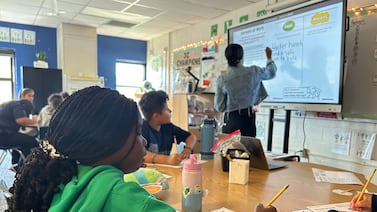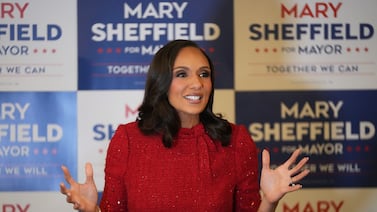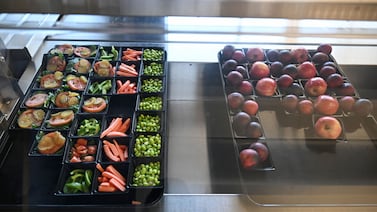Just before lunchtime on a summer Tuesday at Munroe Elementary, six just-graduated kindergarteners headed outside clutching sticks of sidewalk chalk. But the 5- and 6-year-olds weren’t there to draw. Instead, the sidewalk chalk was part of a math lesson on estimation.
“Okay, amores, rápido, one, two, three, eyes on me!” said teacher Olga Marulanda.
The students’ task was to write their names in chalk on the blacktop, count the letters, and write the number. They had just spent several minutes inside estimating how many pieces of chalk were in the box. One girl guessed 50. Another guessed 100. A boy guessed 100,000.
To get at the real number — 48 — Marulanda had the students count the chalk sticks aloud.
“Uno,” they said in unison as she plucked a peach-colored stick from the box. “Dos, tres…”
The rising first-graders are among the youngest participants in Denver Public Schools’ summer program, which started this week. About 2,600 students entering first through fifth grades will spend the next six weeks at 15 elementary schools across the city, doing math and reading lessons and science-related enrichment activities for eight hours a day.
Called Summer Connections, the program is like a super-sized version of past summer offerings, which were shorter and more narrowly focused on helping young students learn to read. But after two years of pandemic-related disruptions, educators pushed to expand the program as a way to help students gain academic ground.
The district is spending about $5 million of its $205 million in federal COVID relief funds on it this year, said Brittany Miller, the district’s senior director of expanded academic learning.
“We know that by expanding the day and including the enrichments we have, we’re going to be able to support attendance and bring the joy into it so kids will want to come,” said Bridgett Bird, the senior manager of expanded academic learning.
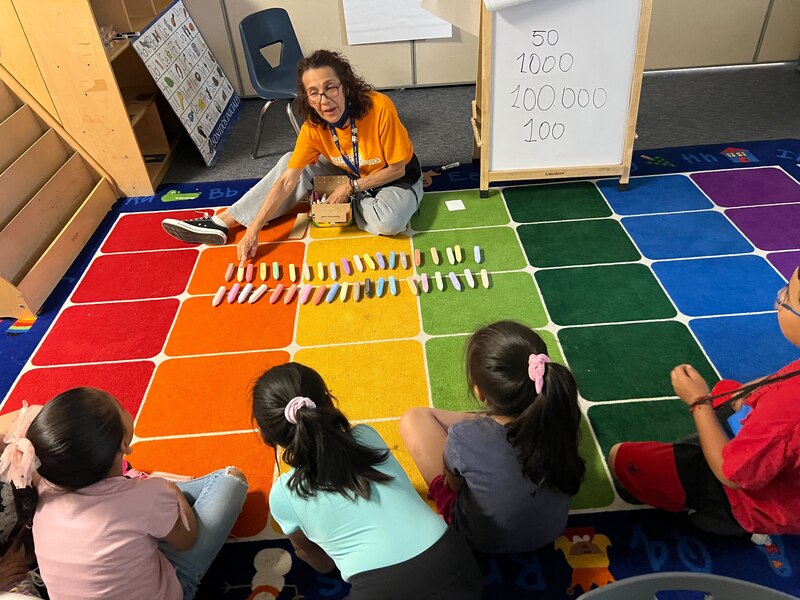
Though Summer Connections is open to all Denver elementary students, Bird and Miller said the district targeted outreach to families whose children experienced greater disruptions to their learning during the pandemic. That includes students with disabilities, students learning English as a second language, students from low-income families, and students of color, whose families were more likely to choose virtual learning during the first year of the pandemic.
The district used a cascading communications approach, first sending emails about the program to families at schools serving students with the highest needs, Miller said. Every few weeks, the district added more schools to the list, eventually filling most of the 3,000 available spots. The program is free and bus transportation is provided.
The demographics of the enrolled students closely mirror the demographics of the 90,000-student district. Half of the 2,600 Summer Connections students are Hispanic or Latino, 17% are Black, 24% are white, and 4% are Asian. About 38% of students are multilingual learners, including the rising first graders in Marulanda’s class.
Marulanda typically teaches preschool at Munroe Elementary in southwest Denver, and she previously taught several of the students in her summer class. To staff Summer Connections, the district hired more than 500 teachers, principals, secretaries, and other staff.
Based on feedback from educators, many of whom are burned out after two and a half years of pandemic teaching, Miller said the district split the summer gig into two three-week sessions, allowing educators to teach one or both. To help retain early career teachers, the district is offering those who have between zero and two years of experience the opportunity to teach summer school alongside a more experienced mentor teacher.
The summer classes are intentionally small — 15 students or fewer — to give teachers and students more time working one-on-one. In a class of rising third graders at Munroe, mentor teacher Karlyn Franchini taught five students about open and closed syllables while co-teacher Taylor Cole, who’s newer to the role, checked to see if they understood.
“Is it open or closed?” Cole asked a pair of boys who were sorting one-syllable words like “scan” and “pet” into two columns, opening and closing her fist to visualize the concept.
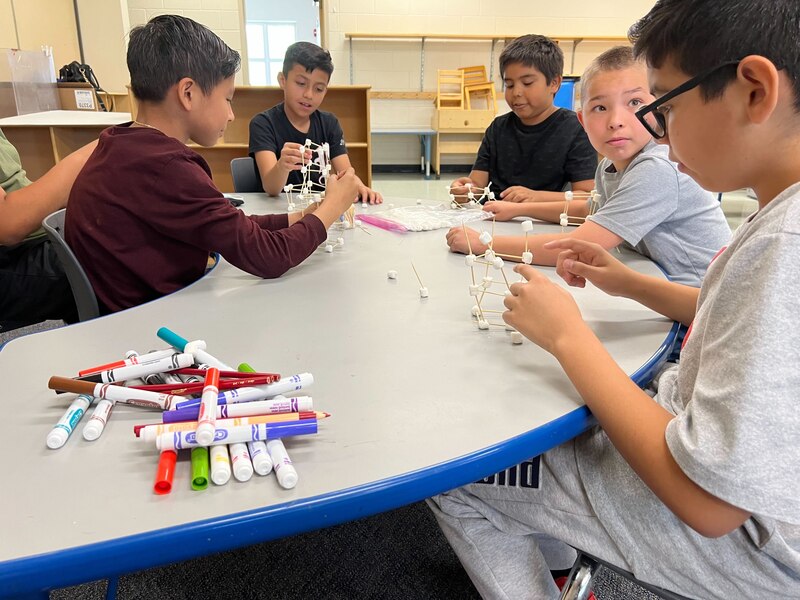
Across the hall, rising fifth graders were building structures out of marshmallows and toothpicks as part of “genius time,” the hour set aside each day for science-based enrichments.
Genius time is one way summer school feels different from regular school, Bird and Miller said. It’s also part of an effort to re-envision curriculum as the district tries to accelerate student learning post-pandemic, they said. Because science is fun, and it’s possible to practice literacy and math while doing it, educators built the science units first and then tied other subjects to them.
“We’re ideally empowering our educators to think differently about what’s possible,” Miller said.
So far, the students seem to appreciate the effort. At the end of genius time, the rising fifth graders were asked to write a reflection on their favorite part of the lesson.
“How do you spell ‘marshmallow?’” one girl called out.
Melanie Asmar is a senior reporter for Chalkbeat Colorado, covering Denver Public Schools. Contact Melanie at masmar@chalkbeat.org.

